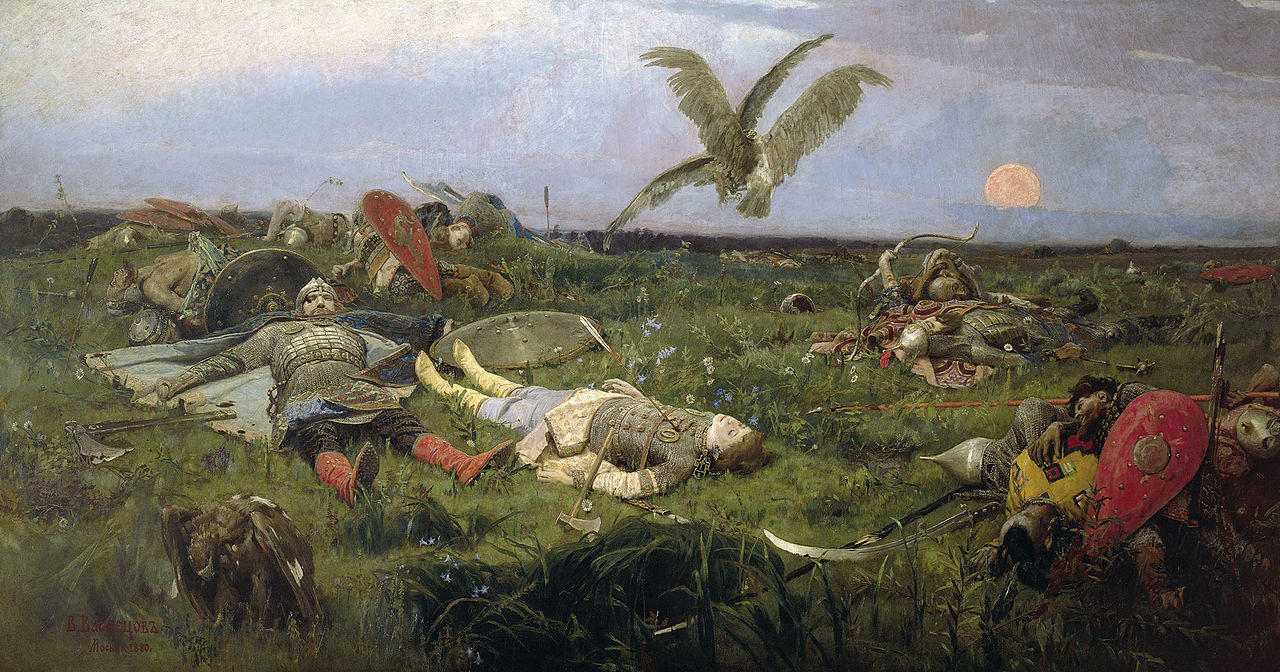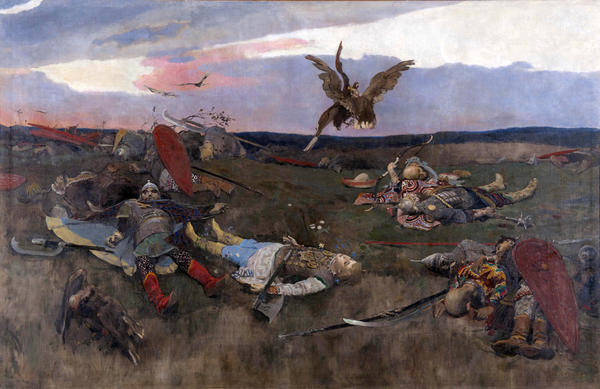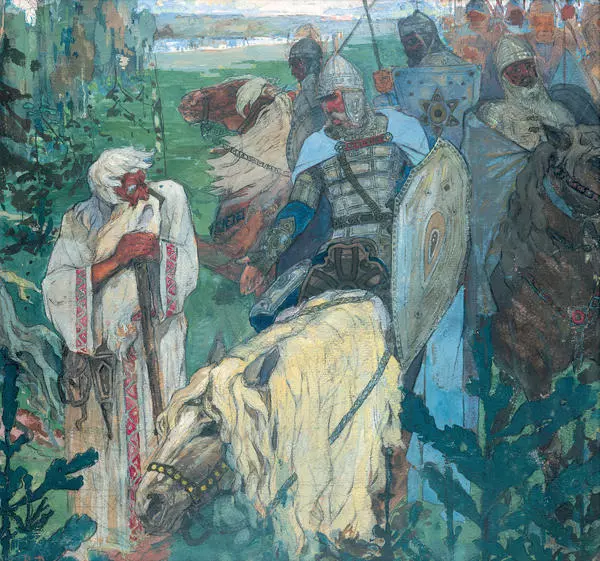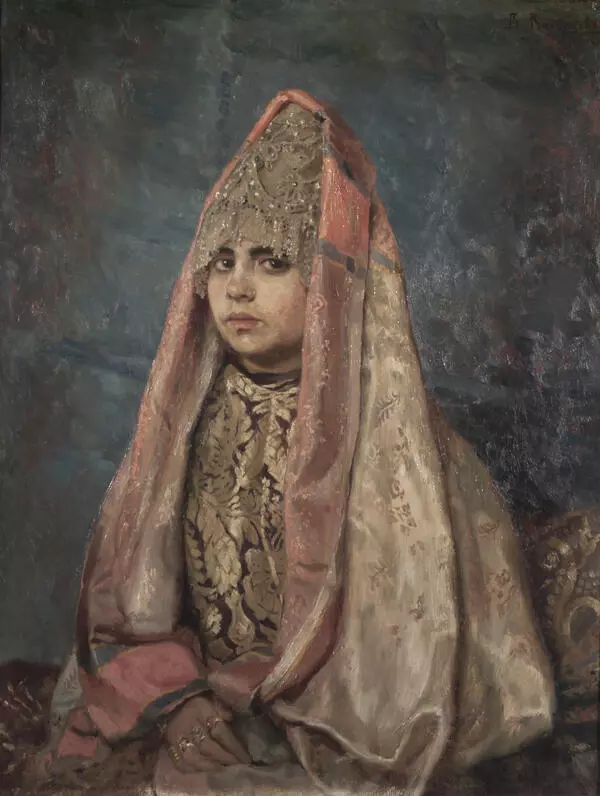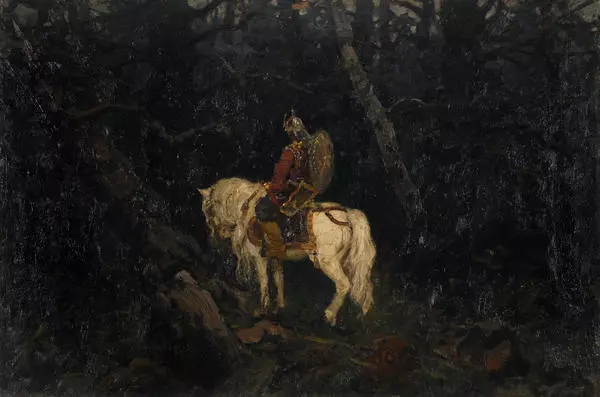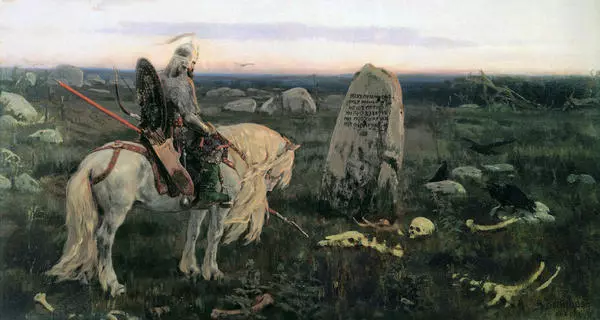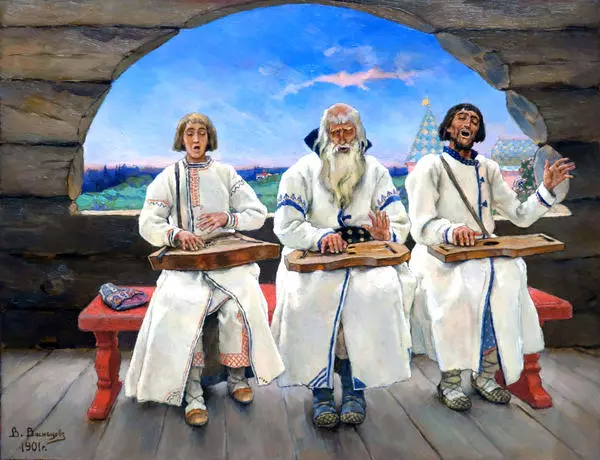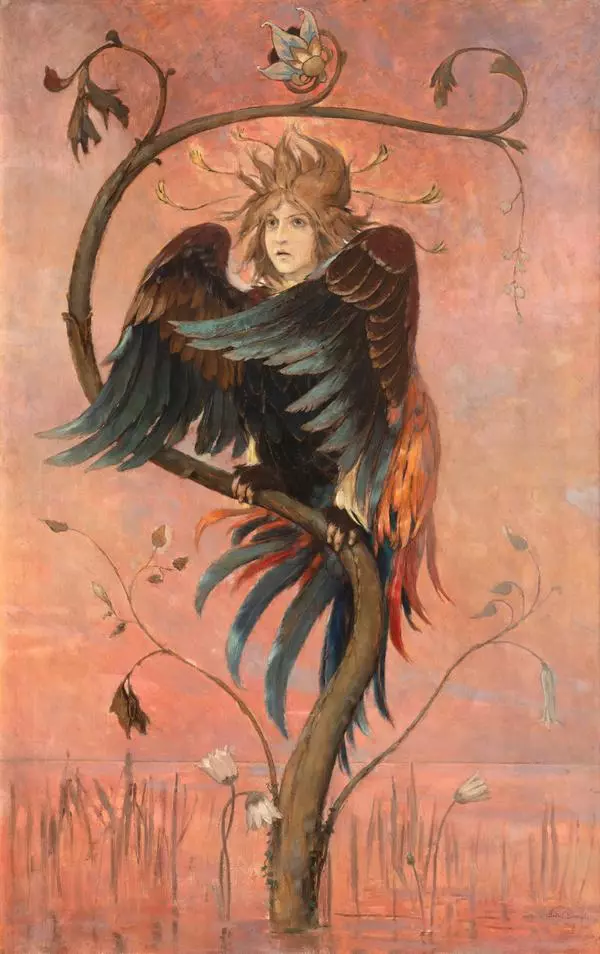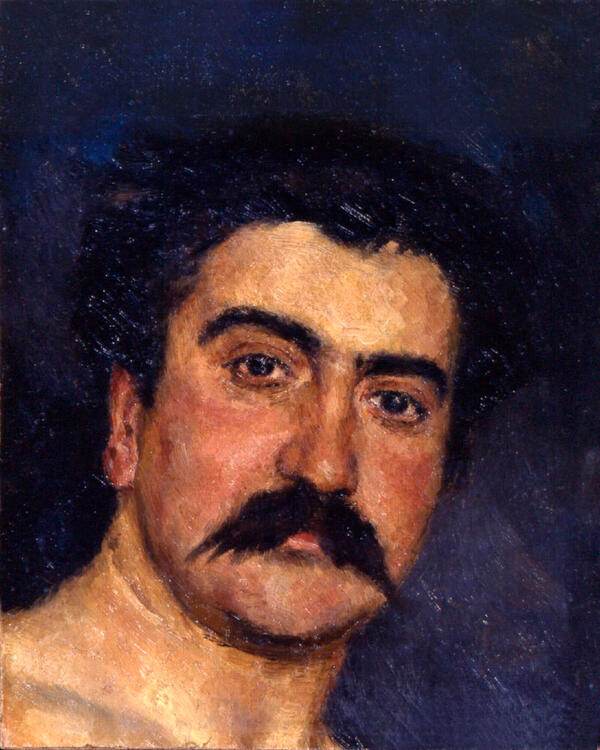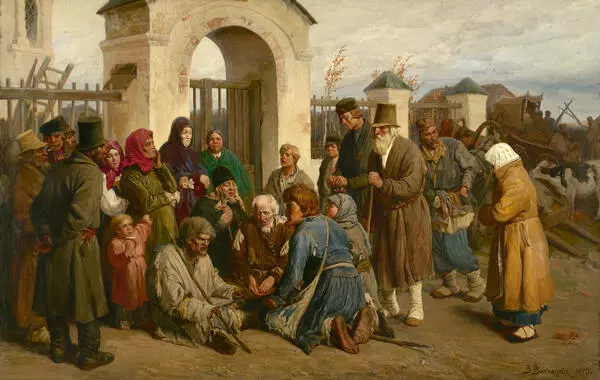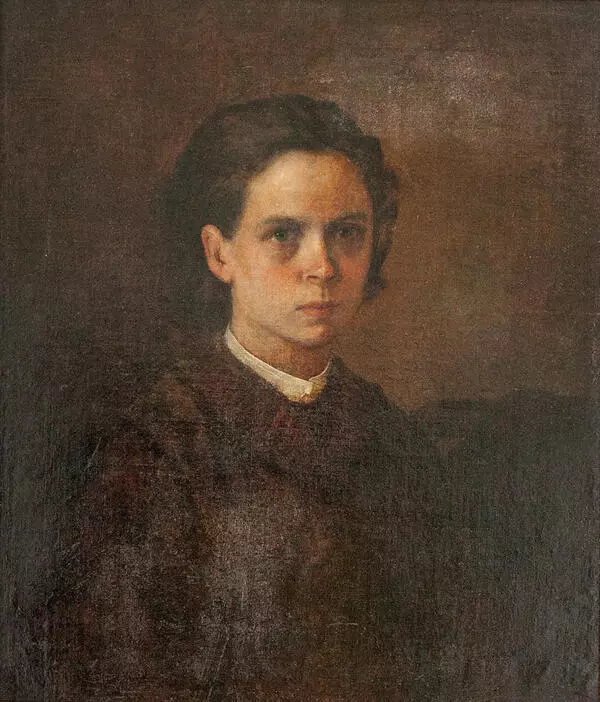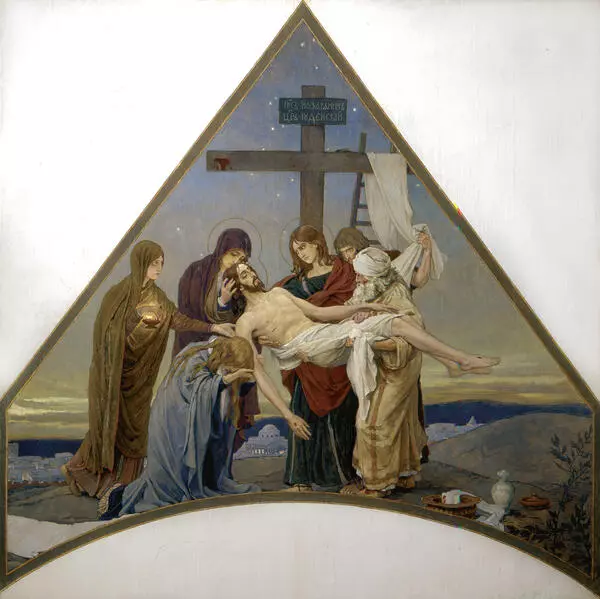The subject for one of Viktor Vasnetsov’s most famous paintings is borrowed from the old Russian epic poem The Tale of Igor’s Campaign. It gives an account of a failed raid of Igor Seversky, an appanaged prince, against the Polovtsians. Vasnetsov knew that ancient text to the littlest detail. His nephew, Vsevolod, said that ‘Sometimes, while on the move, my uncle would recite from The Tale of Igor’s Campaign. He loved that wonderful poetic narrative and knew it by heart’.
Vasnetsov embarked on the paining in the late 1870s after his relocation to Moscow. He spent days and days in the Armoury of the Moscow Kremlin studying the ancient exhibits and sketching them. In 1880, at the exhibition of the Itinerants, a group of Russian realist artists, he demonstrated a painting in the spirit of poetic folklore rather than a historical battle scene. The new painting lacked any slaughterous naturalistic details. Researchers believe that Vasnetsov’s ‘After the Battle…’ was the cornerstone in the formation of the original historical folklore direction in the Russian art.
The massive canvas shows a devastated scorched plain stretching up to the horizon and speckled with bodies of killed warriors, both Polovtsians and Russians. The artists shows Polovtsians in unnatural hunched up postures, their faces down on the ground. Because of that, as it was widely believed, their souls would never be able to leave their bodies and find their way to the heavens. Russian warriors lie with their faces up, calm and still, as if they were still protecting their dear land from the enemy. This is to signify that even that the battle is lost, they have maintained honor and dignity.
The centerpiece of the composition is a very young adolescent prince lying among the older men. He looks so serene, as if he were fast-asleep on the battlefield, but he is never to wake up.
The State Vladimir-Suzdal Museum Reserve has an earlier version of the ‘After the battle…’. It differs from Vasnetsov’s final painting[1], and shows how the artist’s concepts changed over time while he was working on the painting as well as it makes it clear what details the artist believed important.
For example, Vasnetsov abandoned the ‘bloody’ color of the sky for the sake of a calmer and lighter one. In the earlier painting, there are almost no flowers in the field, while in the final one there are many of them, and their abundance adds a touch of serenity to the horrifying scene. Vasnetsov made the paining ostensibly ‘lighter-weight’ by adding lighter colors and making the final paining more lyrical.
Vasnetsov embarked on the paining in the late 1870s after his relocation to Moscow. He spent days and days in the Armoury of the Moscow Kremlin studying the ancient exhibits and sketching them. In 1880, at the exhibition of the Itinerants, a group of Russian realist artists, he demonstrated a painting in the spirit of poetic folklore rather than a historical battle scene. The new painting lacked any slaughterous naturalistic details. Researchers believe that Vasnetsov’s ‘After the Battle…’ was the cornerstone in the formation of the original historical folklore direction in the Russian art.
The massive canvas shows a devastated scorched plain stretching up to the horizon and speckled with bodies of killed warriors, both Polovtsians and Russians. The artists shows Polovtsians in unnatural hunched up postures, their faces down on the ground. Because of that, as it was widely believed, their souls would never be able to leave their bodies and find their way to the heavens. Russian warriors lie with their faces up, calm and still, as if they were still protecting their dear land from the enemy. This is to signify that even that the battle is lost, they have maintained honor and dignity.
The centerpiece of the composition is a very young adolescent prince lying among the older men. He looks so serene, as if he were fast-asleep on the battlefield, but he is never to wake up.
The State Vladimir-Suzdal Museum Reserve has an earlier version of the ‘After the battle…’. It differs from Vasnetsov’s final painting[1], and shows how the artist’s concepts changed over time while he was working on the painting as well as it makes it clear what details the artist believed important.
For example, Vasnetsov abandoned the ‘bloody’ color of the sky for the sake of a calmer and lighter one. In the earlier painting, there are almost no flowers in the field, while in the final one there are many of them, and their abundance adds a touch of serenity to the horrifying scene. Vasnetsov made the paining ostensibly ‘lighter-weight’ by adding lighter colors and making the final paining more lyrical.
